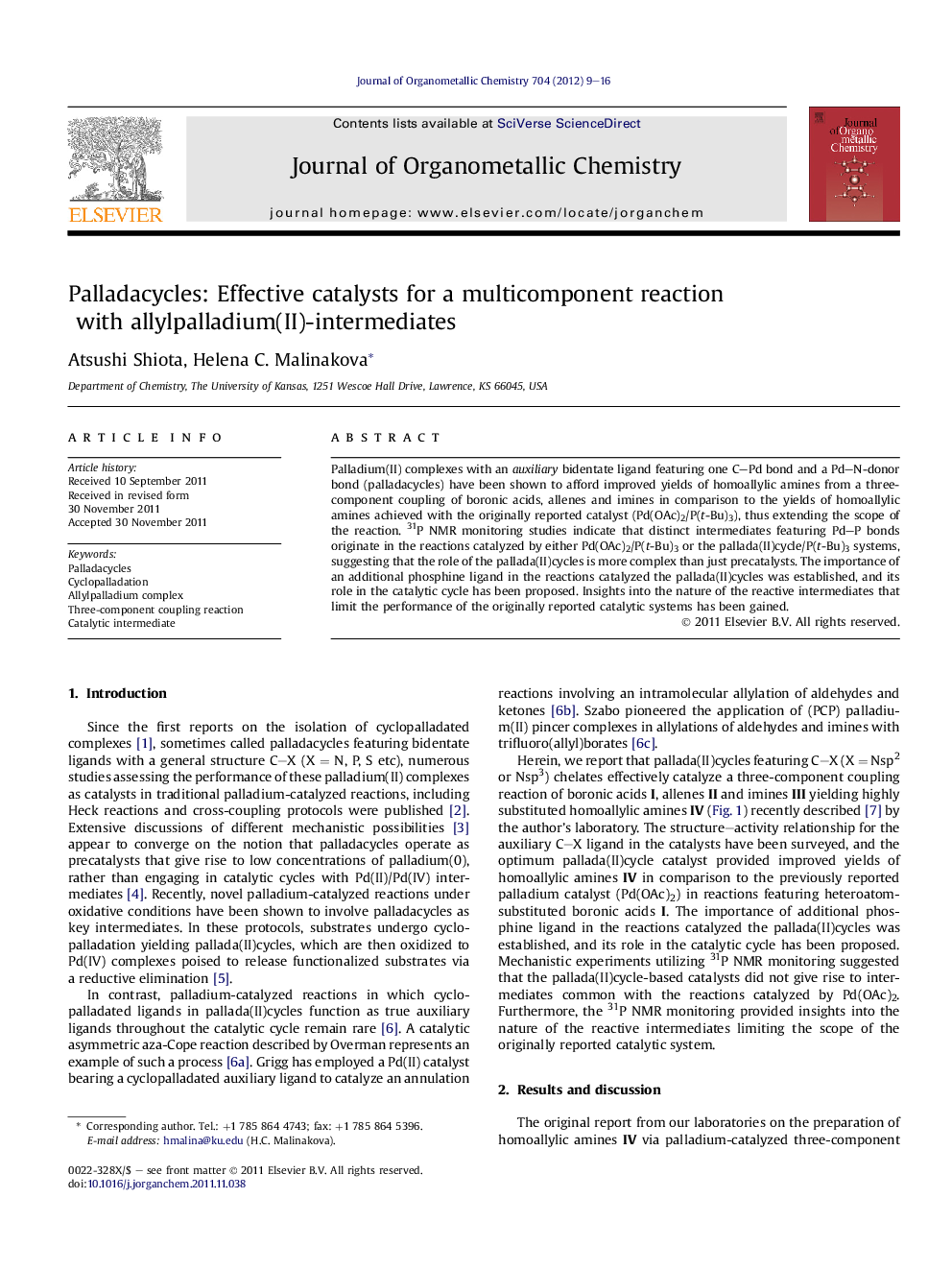| Article ID | Journal | Published Year | Pages | File Type |
|---|---|---|---|---|
| 1326305 | Journal of Organometallic Chemistry | 2012 | 8 Pages |
Palladium(II) complexes with an auxiliary bidentate ligand featuring one C–Pd bond and a Pd–N-donor bond (palladacycles) have been shown to afford improved yields of homoallylic amines from a three-component coupling of boronic acids, allenes and imines in comparison to the yields of homoallylic amines achieved with the originally reported catalyst (Pd(OAc)2/P(t-Bu)3), thus extending the scope of the reaction. 31P NMR monitoring studies indicate that distinct intermediates featuring Pd–P bonds originate in the reactions catalyzed by either Pd(OAc)2/P(t-Bu)3 or the pallada(II)cycle/P(t-Bu)3 systems, suggesting that the role of the pallada(II)cycles is more complex than just precatalysts. The importance of an additional phosphine ligand in the reactions catalyzed the pallada(II)cycles was established, and its role in the catalytic cycle has been proposed. Insights into the nature of the reactive intermediates that limit the performance of the originally reported catalytic systems has been gained.
Graphical abstractPallada(II)cycles with C–N chelates in the auxiliary ligands were found to be more effective catalysts for a three-component coupling reaction yielding homoallylic amines than (Pd(OAc)2/P(t-Bu)3) catalytic systems.Figure optionsDownload full-size imageDownload as PowerPoint slideHighlights► Palladacycles with N-donor atoms catalyze a three-component coupling reaction. ► Optimum palladacycle affords improved yields in comparison to Pd(OAc)2 catalyst. ► Structure of the cyclopalladated auxiliary ligand controls catalyst reactivity. ► 31P NMR spectra differ for reactions with Pd(OAc)2 and pallada(II)cycle catalysts.
